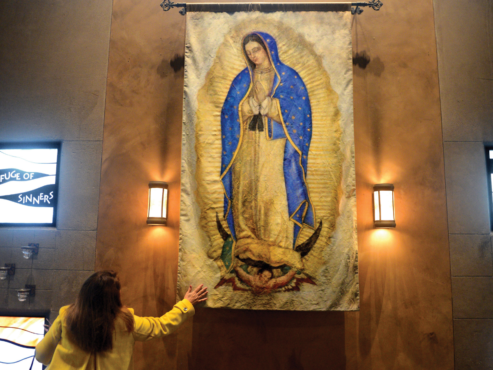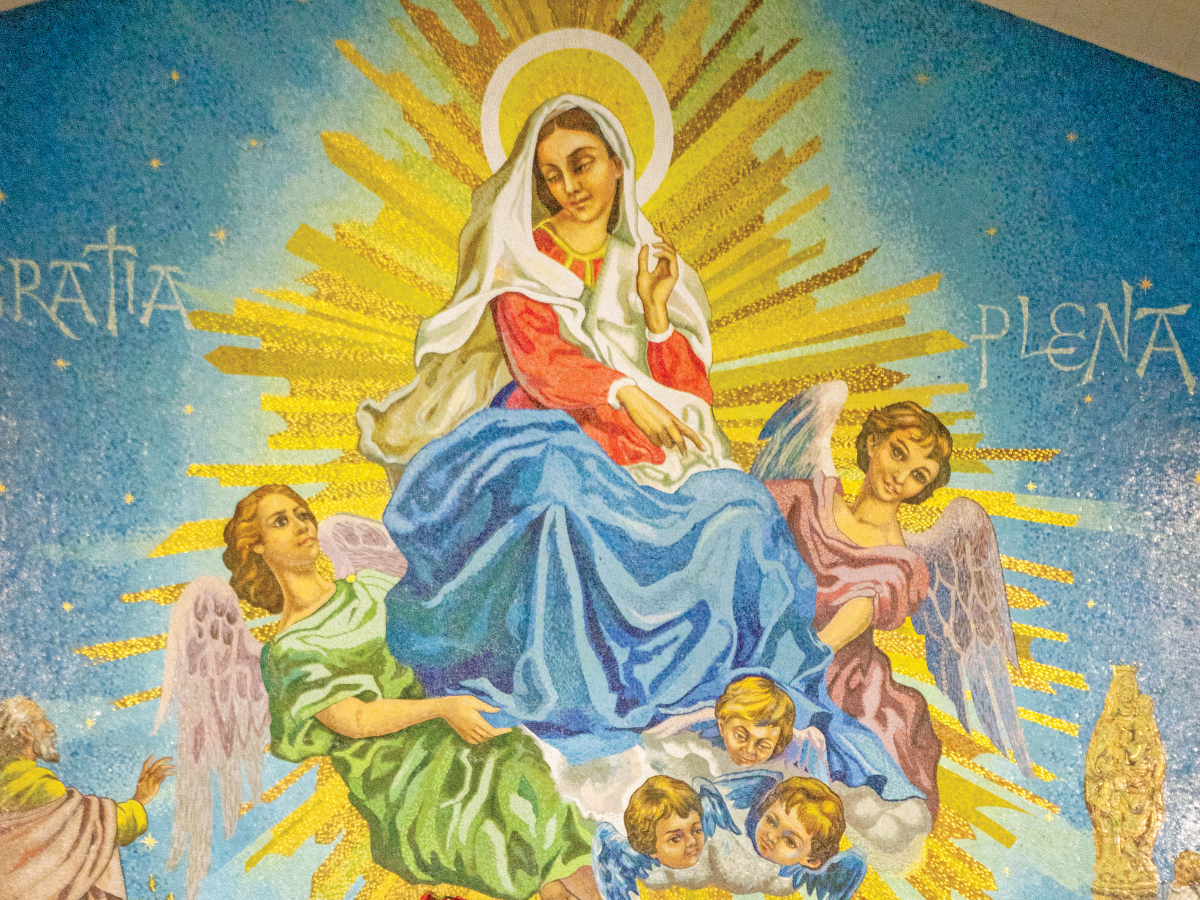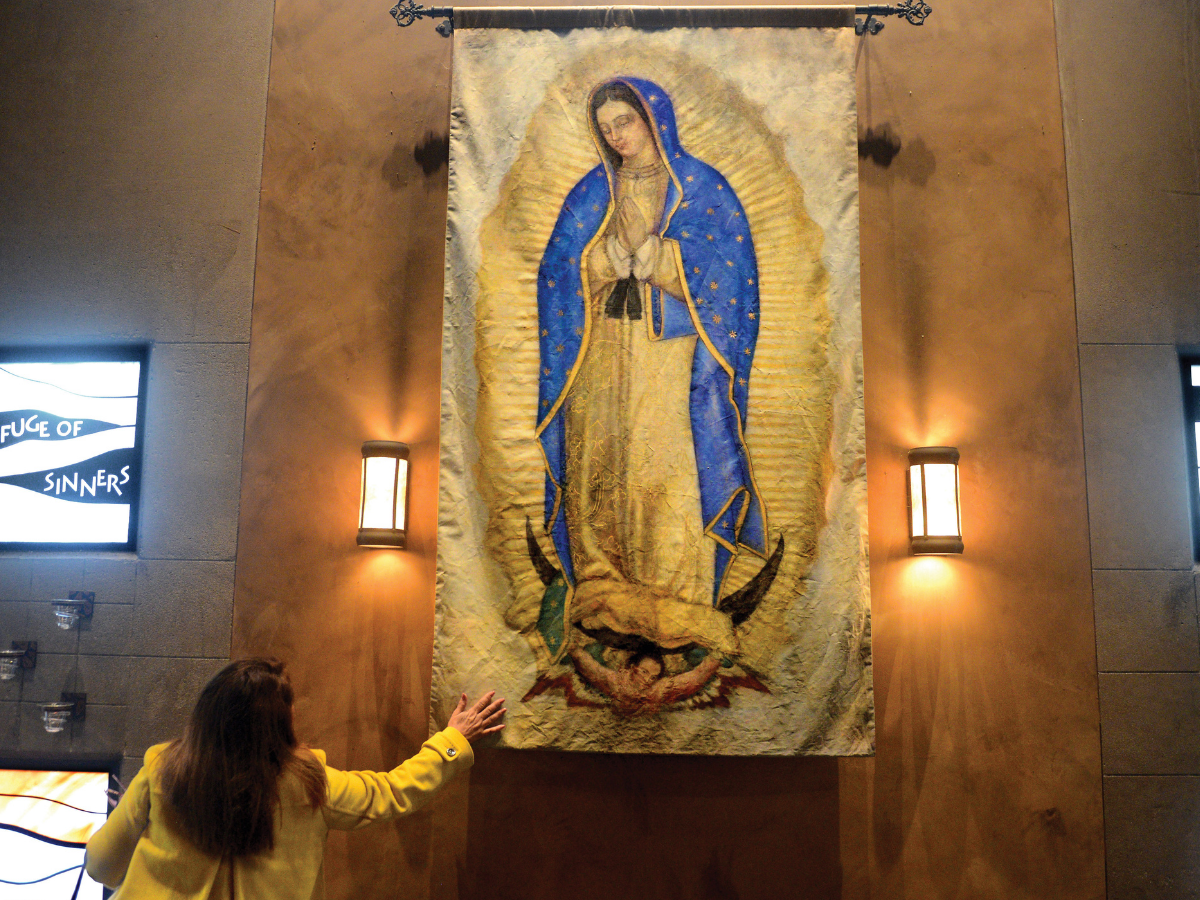Since the earliest days of the Church, the month of May has been dedicated to the Blessed Virgin Mary. Some suggest this is related to the ancient Greek custom of May celebrations to Artemis – the goddess of fertility and childbirth. May was dedicated to the goddess Flora, patron of blooms and blossoms, as in flora and fauna in ancient Rome. When the Church was young, honoring Mary at these times was a way of converting pagan festivals to Christianity.
But Mary is not a goddess – she is the Theotokos or God-bearer, and what better time to celebrate Mary’s role in salvation in the month brimming with new life. At least in the Northern Hemisphere, May is associated with an end to the dark days of winter and new growth.
As Catholics, we enjoy a special closeness to Mary as her spiritual children. She embodies what we would be were it not for Original Sin. She personifies what we can become through God’s grace and salvation, and through her example, we
earn how to follow Jesus perfectly.
It is difficult to give an exact date when May was first associated with honoring Mary. For centuries the Catholic Church set aside the entire month to honor her. In the Middle Ages, there was a tradition of 30-days devoted to Mary, called the Tricesimum, but it was held in late summer.
May is usually part of the Easter season, situated between Easter Sunday and Pentecost. We recall Mary’s presence at the earliest times in the Church and her significant role during this time. Her last words at the wedding feast at Cana were, “do whatever he tells you.” Mary is always pointing us toward Jesus.

A PARISHIONER TOUCHES AN ICON TO THE VIRGIN MARY FOLLOWING ST. VINCENT DE PAUL’S ANNUAL CELEBRATION OF THE FEAST OF OUR LADY OF GUADALUPE IN HUNTINGTON BEACH IN DECEMBER 2019. PHOTO: BILL ALKOFER
In May, we honor Mary with special hymns, rosaries, altars and many parishes hold May Crowing ceremonies where a wreath of flowers is placed on top of a statue of Mary. Apparitions of Mary often include flowers, or the scent of roses, the most famous of which is the 1531 apparition of Our Lady of Guadalupe in Mexico City.
Father Quan Tran, the pastor of St. Hedwig Parish in Los Alamitos, recently published a book, The Imitation of Mary: Keys to Growth in Virtue and Grace.
“I think the association with springtime and Mary is because this is a time of new life and optimism,” said Fr. Tran.
Honoring Mary is rooted in the bible, notes Fr. Tran. First, the Angel Gabriel’s declaration: “Hail full of Grace,” acknowledges Mary’s special place among all people. Her unique role is highlighted throughout the New Testament, especially at the crucifixion, “When Jesus saw his mother and the disciple there whom he loved, he said to his mother, “Woman, behold, your son.” Then he said to the disciple, “Behold, your mother.” And from that hour, the disciple took her into his home.”
Mary was with Jesus throughout his ministry and aided the early Church after the Ascension. Mary was present at the Pentecost when the Holy Spirit descended upon the apostles to help fortify them for evangelization. It is clear from the context that the Apostles uniquely honored Mary.
Two significant Marian feast days are celebrated in May; the first is the Feast of Our Lady of Fatima on May 13, the day of her first apparition to the children in Portugal. The second is May 31, the feast of the Visitation of Mary to her kinswoman Elizabeth.
In the United States, we celebrate Mother’s Day in May – a happy coincidence that was not originally established to honor Mary and her divine motherhood, but there is a connection, nonetheless.
Most importantly, Mary has been a part of Catholic teaching, devotion and revelation since the earliest days. There are countless examples of her intercession on behalf of all of us during times of war and suffering – she is a protector and guide leading us to her son.
With so much going on in the world today, this May, it may be beneficial to make a special effort to honor our heavenly mother in our home. A May altar, family rosaries and attendance at Mass can go a long way toward healing our troubled world under Mary’s mantle.


